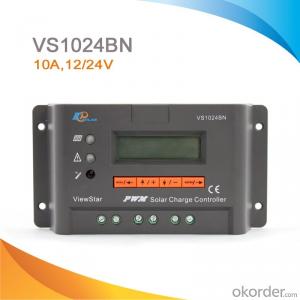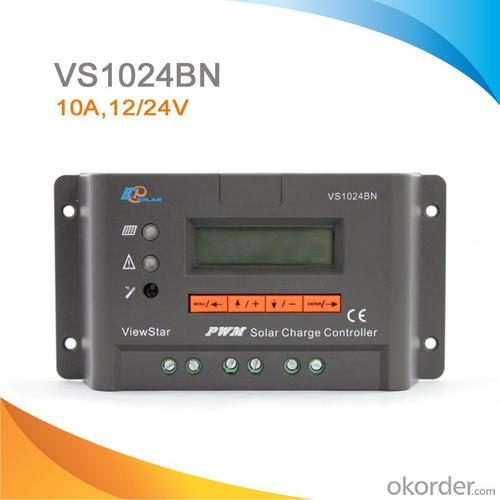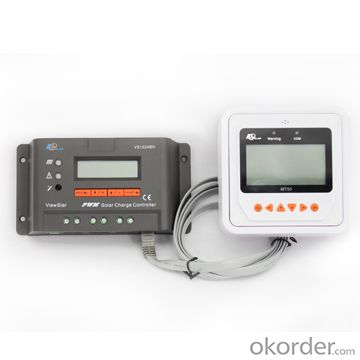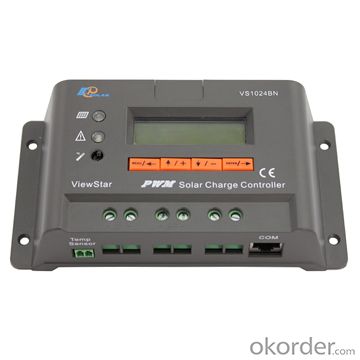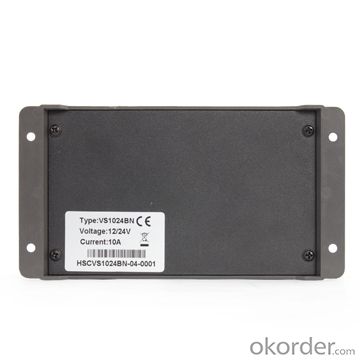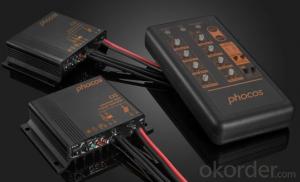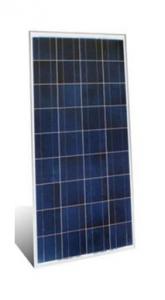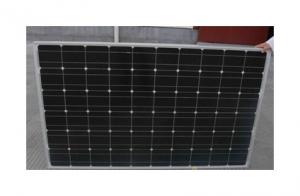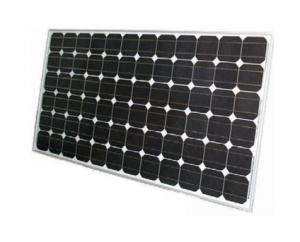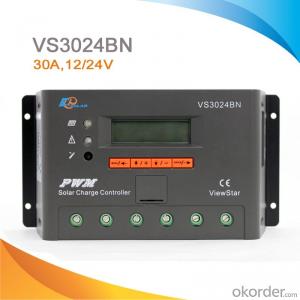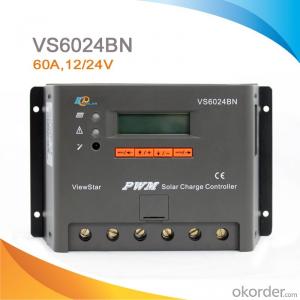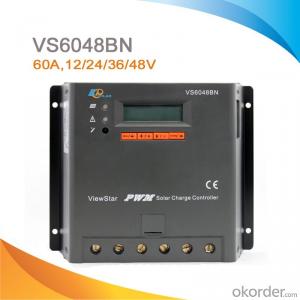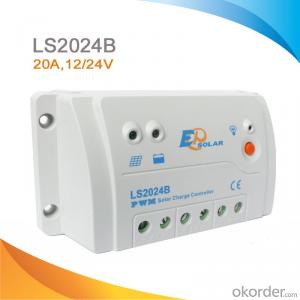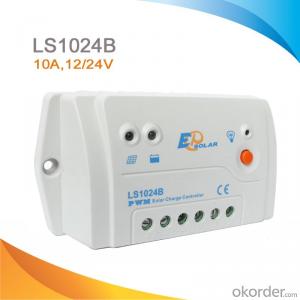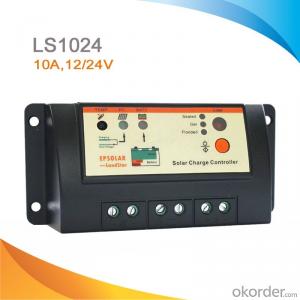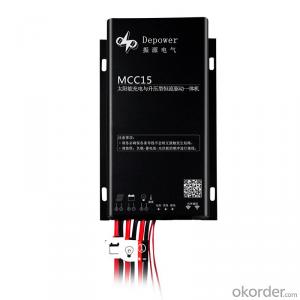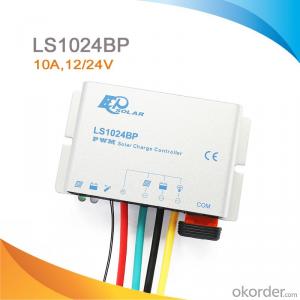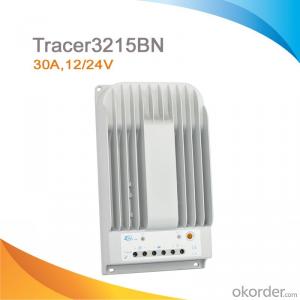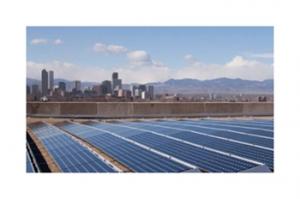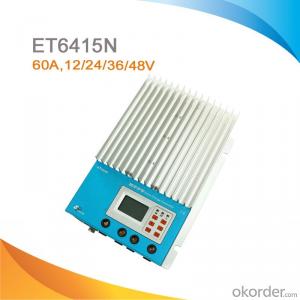60 Amp Intelligent PWM Solar Charge Controller for Solar Street Light, 12V/24V, VS1024BN
- Loading Port:
- China main port
- Payment Terms:
- TT or LC
- Min Order Qty:
- -
- Supply Capability:
- -
OKorder Service Pledge
OKorder Financial Service
You Might Also Like
Features:
·Excellent EMC design
·32 bit MCU with high speed
·High efficient Series PWM charging
·Four battery type options: Sealed, Gel, Flooded, and USER
·Intelligent lighting and timer control for solar lighting system
·12 bit A/D high-precision sampling to ensure accuracy
·Use MOSFET as electronic switch
·Full control parameters setting and modification, diversified load control mode
·Humanized design of browser interface, undertake every operating conveniently
·Temperature compensation
·Adopt graphics dot-matrix LCD screen and HMI (human-machine interface) with 4 buttons,integrated menu displaying and operation
·Energy statistics function
·RS485 ports with MODBUS communication protocol
·Optional PC monitoring software and remote meter for real-time monitoring and battery management parameter setting
·Field upgradable firmware
Specification:
Model | VS1024BN | VS2024BN | VS3024BN | VS4524BN | VS6024BN |
Nominal system voltage | 12V/24V auto work | ||||
Rated battery current | 10A | 20A | 30A | 45A | 60A |
Rated load current | 10A | 20A | 30A | 45A | 60A |
Max. battery voltage | 32V | ||||
Equalize charging voltage | Sealed: 14.6V, Flooded: 14.8V, User-defined: 9~17V | ||||
Boost charging voltage | Gel: 14.2V, Sealed: 14.6V, Flooded: 14.8V, User-defined: 9~17V | ||||
Float charging voltage | Gel /Sealed /Flooded: 13.8V, User-defined: 9~17V | ||||
Low voltage reconnect voltage | Gel /Sealed /Flooded: 12.6V, User-defined: 9~17V | ||||
Low voltage disconnect voltage | Gel /Sealed /Flooded: 11.1V, User-defined: 9~17V | ||||
Self-consumption | ≤15mA(12V); ≤10mA(24V); ≤9mA(36V); ≤8mA(48V) | ||||
Grounding | Common negative | ||||
Temp. compensation | -3mV/°C/2V | ||||
Relative humidity | 10%~90% Non-condensation | ||||
Communication | RS485 / RJ45 interface | ||||
LCD temperature | -20°C ~ +70°C | ||||
Working temperature | -25°C ~ +55°C | ||||
Humidity | ≤95% N.C. | ||||
Enclosure | IP30 | ||||
Overall dimension | 162x85x40mm | 162x100x50mm | 200x103x58mm | 201x109x59mm | 205x129x67mm |
Terminals | 4mm2 | 10mm2 | 16mm2 | 35mm2 | 35mm2 |
Net weight | 0.2kg | 0.4kg | 0.7kg | 0.9kg | 1.3kg |
Warrenty
provides a 1~3 year limited warranty (“Warranty”) against defects in materials and workmanship for its Uninterruptible power supply,
Power inverter/chargers, Solar charge controllers, Battery Products (“Product”).
The term of this Warranty begins on the Product(s) initial purchase date, or the date of receipt of the Product(s) by the end user,
whichever is later. This must be indicated on the invoice, bill of sale, and/or warranty registration card submitted to MUST-Solar.
This Warranty applies to the original MUST-Solar Product purchaser, and is transferable only if the Product remains installed in the original use location.
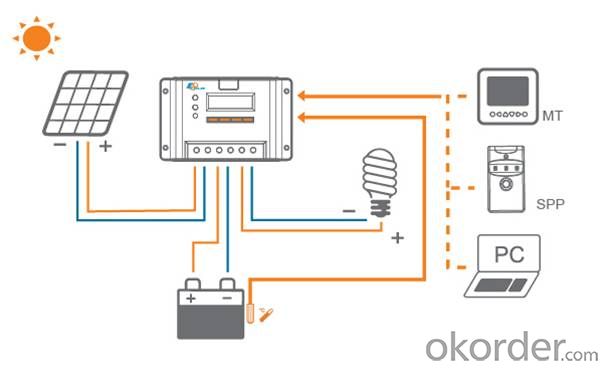
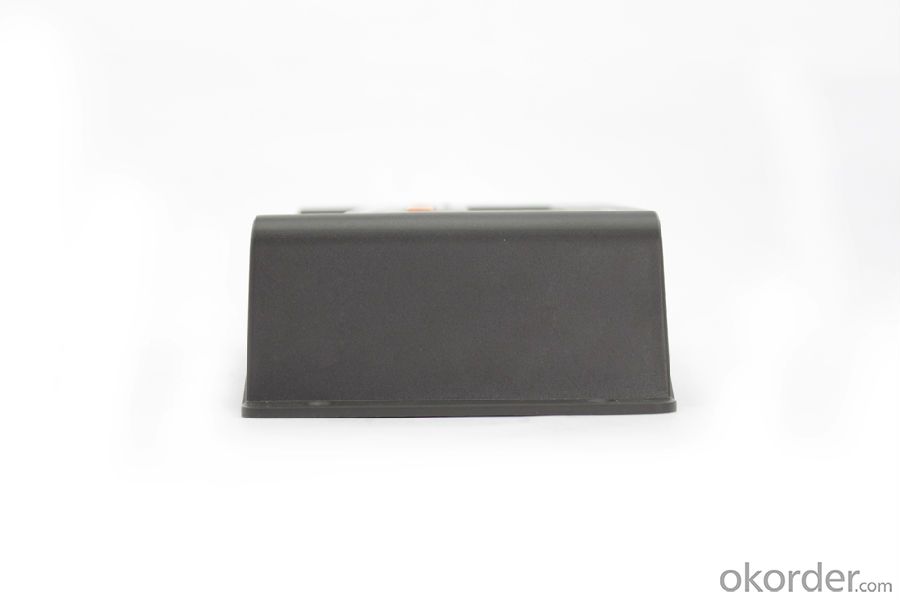
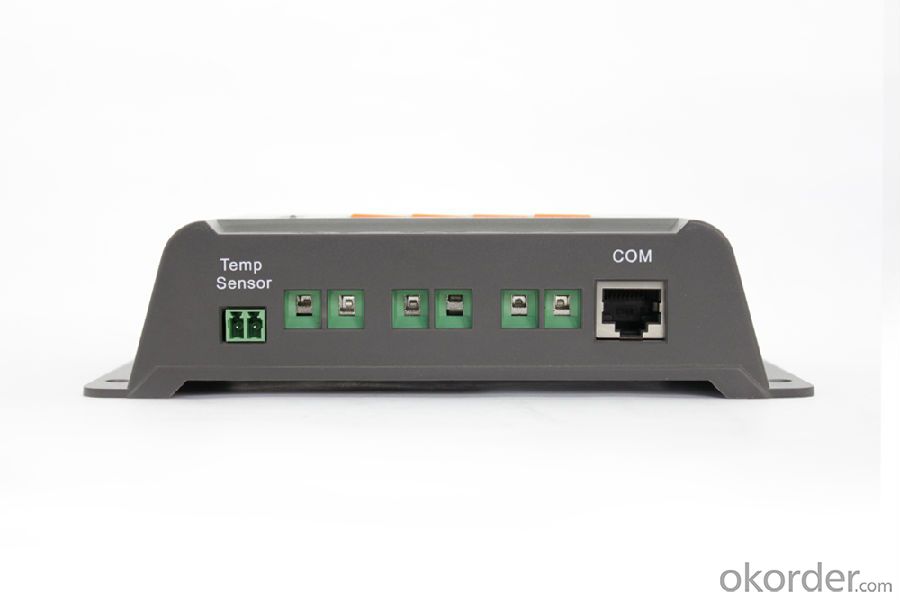
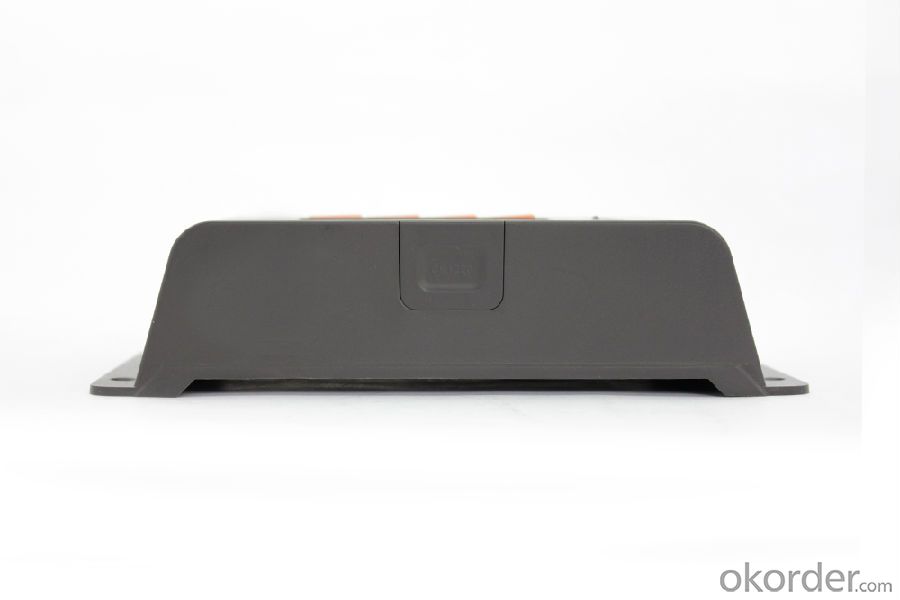
FAQ:
Q1. What is the voltage?
A1. Our 45/60A solar charge controller is 12/24/36/48V auto work.
Q2. What is the difference between MPPT&PWM?
A2. MPPT has higher efficiency, it can track the max power point and won't waste energy.
Q3. What is the efficiency of the MPPT controller?
A3. MPPT>99%, peak conversion efficiency>98%.
Q4. What is the waranty of product?
A4. 12 months.
Q5. What protection does your MPPT controller have?
A5. PV array short circuit, PV reverse polarity, Battery reverse polarity, Over charging, Output short circuit.
- Q: Can a solar controller be used with a solar-powered boat?
- Yes, a solar controller can be used with a solar-powered boat. A solar controller helps regulate the flow of electricity from the solar panels to the boat's battery bank, ensuring optimal charging and preventing overcharging. It is an essential component for efficiently managing and utilizing solar power on a boat.
- Q: What is the maximum number of communication protocols supported by a solar controller?
- The maximum number of communication protocols supported by a solar controller can vary depending on the specific model and brand. However, it is common for solar controllers to support multiple protocols, including popular ones like RS485, Modbus, and CANbus.
- Q: Can a solar controller be used with a solar microinverter system?
- Yes, a solar controller can be used with a solar microinverter system. A solar controller helps regulate the voltage and current flow from the solar panels, ensuring optimal charging of batteries or efficient use of power. It can be used in conjunction with a solar microinverter system to enhance performance, monitor energy production, and manage battery charging.
- Q: Can a solar controller be used with solar-powered electric fences for livestock?
- Yes, a solar controller can be used with solar-powered electric fences for livestock. The solar controller regulates the charging and discharging of the battery used in the electric fence system, ensuring optimal power supply and performance.
- Q: Can a solar controller be used with different types of solar charge controllers?
- No, a solar controller is specifically designed to work with a specific type of solar charge controller and may not be compatible with different types.
- Q: How does a solar controller handle battery overvoltage protection?
- A solar controller handles battery overvoltage protection by monitoring the voltage level of the battery. When the voltage exceeds a certain threshold, the solar controller automatically disconnects the solar panel from the battery to prevent overcharging. This protection mechanism ensures the battery's longevity and safety by preventing any damage caused by excessive voltage.
- Q: How do you test the functionality of a solar controller?
- To test the functionality of a solar controller, you can follow these steps: 1. Connect the solar controller to a solar panel and a battery bank, ensuring all connections are secure and properly wired. 2. Verify that the solar controller is receiving power from the solar panel by checking the LED indicators or digital display, if available. 3. Monitor the charge status of the battery bank to ensure the solar controller is effectively regulating the charging process. The battery should show an increasing charge level over time. 4. Test the different charging modes and settings of the solar controller, such as bulk, float, or equalization charging, to ensure they function correctly. 5. Measure the voltage output of the solar controller to confirm it matches the expected values for the specific battery bank. 6. If applicable, test any additional features of the solar controller, such as load control or temperature compensation, to ensure they are operating as intended. 7. Observe the controller's behavior during different weather conditions, such as low light or cloudy skies, to assess its ability to adjust charging parameters accordingly. 8. Finally, compare the solar controller's performance with the manufacturer's specifications to ensure it meets the expected standards. By following this testing process, you can evaluate the functionality and performance of a solar controller and ensure its proper operation in a solar power system.
- Q: Can a solar controller be used with a solar-powered remote cabin or cottage?
- Yes, a solar controller can be used with a solar-powered remote cabin or cottage. A solar controller regulates the flow of electricity from the solar panels to the batteries, preventing overcharging and ensuring the batteries are charged efficiently. It is an essential component for managing and optimizing the solar power system in a remote cabin or cottage.
- Q: Does a solar controller have a built-in timer function?
- Yes, a solar controller typically has a built-in timer function. This feature allows users to set specific times for the solar panel system to operate and provides control over when the system should generate and distribute power.
- Q: Can a solar controller be used with solar panels of different manufacturers?
- Indeed, solar panels from various manufacturers can generally be paired with a solar controller. These controllers are specifically designed to oversee the battery charging process using solar panels, and they usually have broad compatibility with different brands and models of panels. Nevertheless, it is crucial to verify that the solar controller aligns with the voltage and current ratings of the solar panels to prevent any potential harm or reduced efficiency. It is highly advisable to refer to the manufacturer's specifications and guidelines for assurance of compatibility and optimal functioning.
Send your message to us
60 Amp Intelligent PWM Solar Charge Controller for Solar Street Light, 12V/24V, VS1024BN
- Loading Port:
- China main port
- Payment Terms:
- TT or LC
- Min Order Qty:
- -
- Supply Capability:
- -
OKorder Service Pledge
OKorder Financial Service
Similar products
Hot products
Hot Searches
Related keywords
